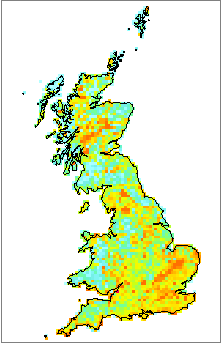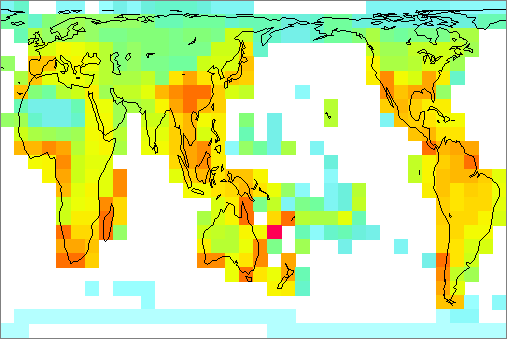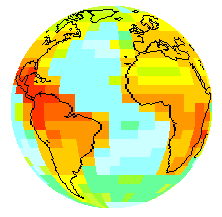![]() Rarity
is important in the conservation of biodiversity for several reasons, including
the restrictions imposed by having fewer area-options available for narrowly
distributed species when attempting to represent as many species as possible
for conservation (assessing conservation
priority) (ref 8).
Rarity
is important in the conservation of biodiversity for several reasons, including
the restrictions imposed by having fewer area-options available for narrowly
distributed species when attempting to represent as many species as possible
for conservation (assessing conservation
priority) (ref 8).
If rarity is the condition of occurring infrequently, then it may be seen as taking the form of rarity of occupancy among areas (range-size rarity) as well as rarity of individuals within areas (density rarity). However, species with relatively restricted geographical distribution ranges do not always have low local abundances (and vice versa).
In contrast, endemism is the condition of being restricted to a particular area with a prescribed extent. Consequently, measures of range-size rarity can be equivalent to measures of narrow endemism, providing that the entire range of the species is encompassed within the study area and that the measures to be compared are expressed relative to the total extent of the survey area.
For species distribution maps that are divided into grid cells, the range sizes of the species can be quantified as counts of the numbers of grid cells occupied. The scores from these measures depend strongly on the spatial scale of the study (both the total survey extent and the gridcell size). For example, bluebells may have a narrowly restricted range within Europe, but are widespread within Britain.
Two approaches to measuring rarity or narrow endemism have been used:


 |
Link to image showing current joint work with Raino Lampinen, Tapani Lahti and Pertti Uotila of Atlas Florae Europaeae to look at patterns of rarity and endemism in European land plants. |